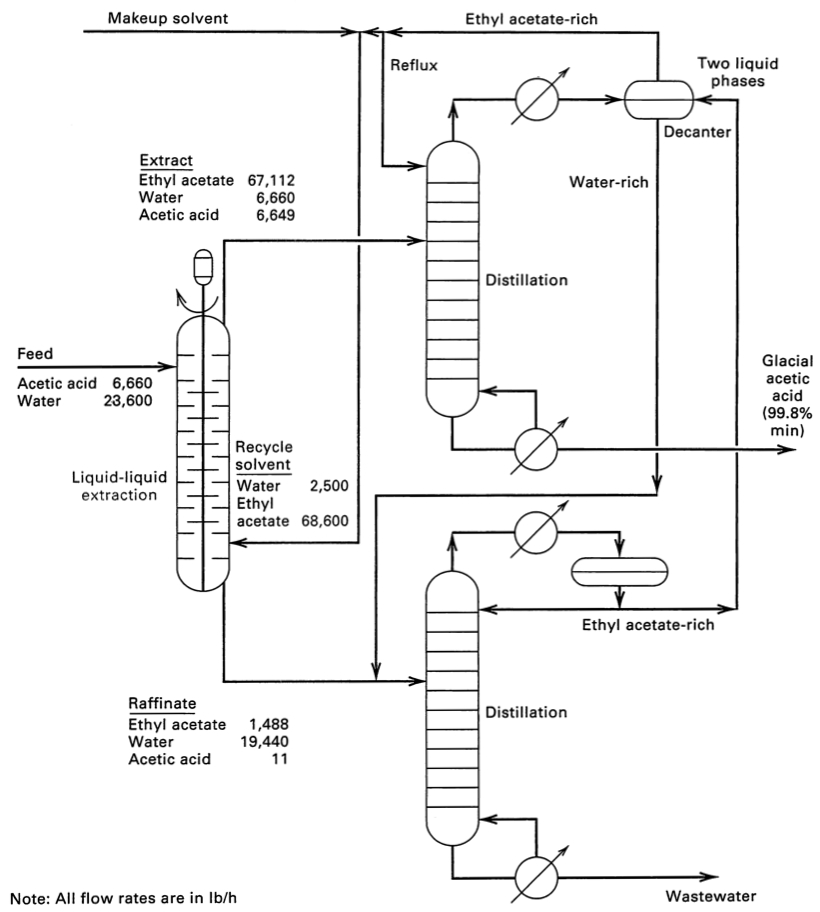Difference between revisions of "Liquid-liquid extraction - 2014"
Jump to navigation
Jump to search
Kevin Dunn (talk | contribs) |
Kevin Dunn (talk | contribs) |
||
| Line 106: | Line 106: | ||
| [http://learnche.mcmaster.ca/media/2014-4M3-Class-10C.mp4 Video] | | [http://learnche.mcmaster.ca/media/2014-4M3-Class-10C.mp4 Video] | ||
| [http://learnche.mcmaster.ca/media/2014-4M3-Class-10C.mp3 Audio] | | [http://learnche.mcmaster.ca/media/2014-4M3-Class-10C.mp3 Audio] | ||
|align="left" colspan="1"| | |||
Web links shown in the class: | |||
* [http://modularprocess.com/liquid-extraction/extraction-column-types/rdc/ Rotating disc column] | |||
* [http://modularprocess.com/liquid-extraction/extraction-column-types/karr-columns/ Karr column] | |||
* [http://modularprocess.com/liquid-extraction/extraction-column-types/scheibel-columns/ Scheibel column] | |||
* [http://modularprocess.com/liquid-extraction/extraction-column-types/other-columns/ Pulsed and packed columns] | |||
|- | |||
| 11 November | |||
| 11A | |||
| align="left" colspan="1"| | |||
Liquid liquid extraction example calculations | |||
| align="left" colspan="1"| | |||
[[Media:2014-4M3-Liquid-Liquid-Extraction.pdf|Slides]] | |||
| <!-- [http://learnche.mcmaster.ca/media/2014-4M3-Class-11A.mp4 Video] --> | |||
| <!-- [http://learnche.mcmaster.ca/media/2014-4M3-Class-11A.mp3 Audio] --> | |||
|align="left" colspan="1"| | |align="left" colspan="1"| | ||
These readings seem old, but they are still relevant. For example, the same principles are used in modern bioseparations. | These readings seem old, but they are still relevant. For example, the same principles are used in modern bioseparations. | ||
| Line 113: | Line 128: | ||
# An interesting [http://learnche.mcmaster.ca/media/mcmaster/Moore--Using-principles-of-inherent-safety-in-design-of-hydrometallurgical-solvent-extraction-plants.pdf reading on safety in liquid-liquid extraction plants]: a further reason for counter-current operations to minimize solvent use. | # An interesting [http://learnche.mcmaster.ca/media/mcmaster/Moore--Using-principles-of-inherent-safety-in-design-of-hydrometallurgical-solvent-extraction-plants.pdf reading on safety in liquid-liquid extraction plants]: a further reason for counter-current operations to minimize solvent use. | ||
|} | |} | ||
<!-- | <!-- | ||
| Line 118: | Line 134: | ||
'''← these are new''' | '''← these are new''' | ||
--> | --> | ||
Revision as of 14:04, 11 November 2014
| Class date(s): | 29 October 2014 | ||||
| |||||
| |||||
| |||||
| |||||
References
Please use these references to read ahead, or for extra background reading on liquid-liquid extraction. In alphabetical order:
- Ghosh, R. "Principles of Bioseparations Engineering", Chapter 7, McMaster (reserve)
- Geankoplis, C.J. "Transport Processes and Separation Process Principles", Chapter 12 in 3rd and 4th edition, McMaster Libraries (reserve)
- Perry's Chemical Engineers' Handbook, Chapter 15, Direct link (McMaster subscription)
- Richardson and Harker, "Chemical Engineering, Volume 2", 5th edition, Chapter 13 ebook
- Schweitzer, "Handbook of Separation Techniques for Chemical Engineers", Chapter 1.9, McMaster library
- Seader, Henley and Roper, "Separation Process Principles", Chapter 8 in 2nd and 3rd edition McMaster Libraries (reserve)
| Date | Class number | Topic | Slides for class | Video and audio files | References and Notes | |
|---|---|---|---|---|---|---|
| 29 October | 09B |
Liquid liquid extraction overview |
Video | Audio |
A comprehensive article on liquid-liquid extraction which describes the various units available. | |
| 04 November | 10A |
Liquid liquid extraction theory and calculations |
Video | Audio |
[reference: Seader et al., p300] | |
| 05 November | 10B |
Liquid liquid extraction example calculations |
Video | Audio |
| |
| 07 November | 10C |
Liquid liquid extraction example calculations |
Video | Audio |
Web links shown in the class: | |
| 11 November | 11A |
Liquid liquid extraction example calculations |
These readings seem old, but they are still relevant. For example, the same principles are used in modern bioseparations.
| |||
